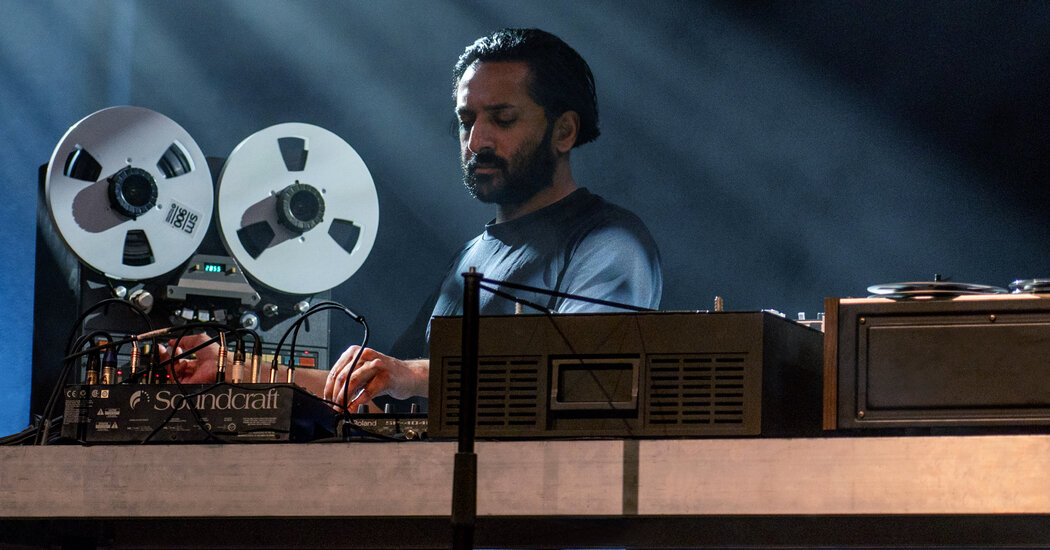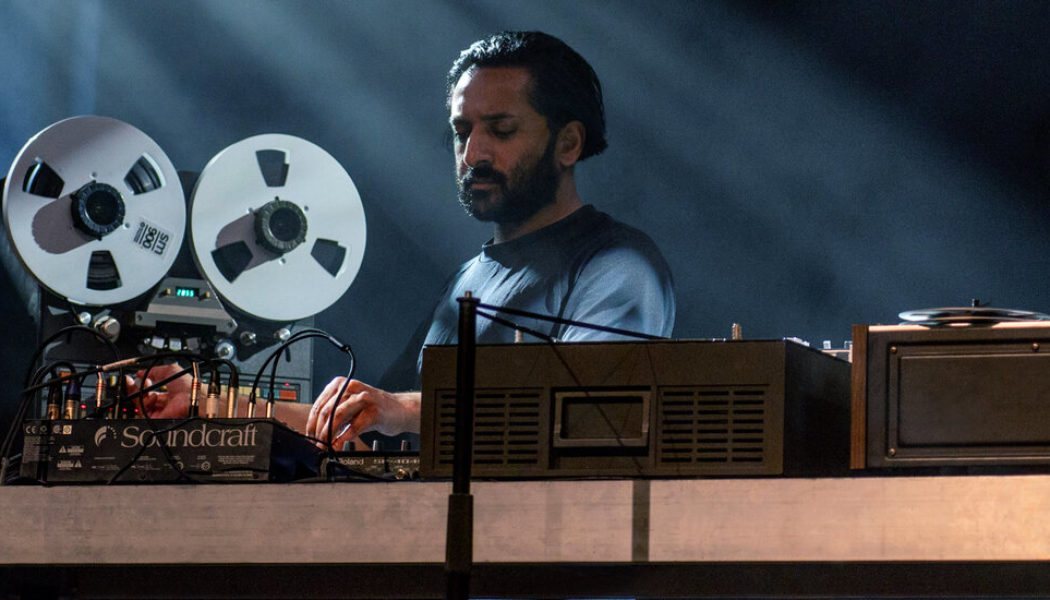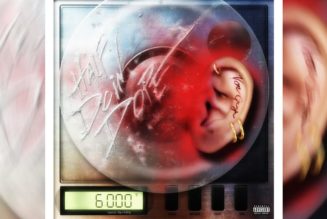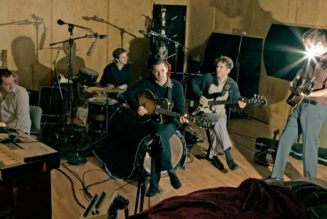
A trove of tapes discovered in a cupboard at the country’s National Institute of Design showcases artists composing early synth recordings on their own terms.
When the musician and artist Paul Purgas was invited in 2017 by the National Institute of Design in Ahmedabad, India, to play some of the music he’d found in its archives that year, he was initially very keen. These were tapes that had been hidden from the public for decades; they proved the existence of a fertile avenue for electronic music in 1960s and ’70s India, and he was determined for people to hear them. But as he went to use the institute’s aging reel-to-reel machine, he got a nasty surprise: an electric shock.
“I think that sobered me up,” he said in an interview. The project, he realized, was about to become “a bit of a lifetime journey.”
Purgas, 43, is a London-based sound artist and curator, and half of the electronic music duo Emptyset. Initially, he had been on the trail of the lost Moog synthesizer that the American experimentalist David Tudor used while in India, which led him to the library of the NID.
In “a victory for good record keeping,” Purgas found details of some unknown Tudor recordings noted in a handwritten logbook by a diligent archivist in the 1960s. He requested them from the archives, and was presented with box after box of carefully annotated tapes, all taken from a neglected cupboard.
Purgas returned to England to undertake training in tape restoration to properly conserve what he’d found: music from a group of Indian composers who, aided initially by Tudor, had used the Moog and some accompanying homemade modular devices between 1969 and 1972 to create some of India’s earliest electronic music.
Following a 2020 BBC radio documentary, “Electronic India,” in which Purgas situated the music in its cultural context, a new compilation — “The NID Tapes: Electronic Music from India 1969-1972,” out Friday — presents the restored pieces in their full variety. There are manipulated field recordings, pieces linked to birds and nature, compositions inspired by Indian classical music, imagined voyages to outer space, and tracks reminiscent of bleep techno or Aphex Twin.
What the recordings demonstrate, Purgas said, is “electronic sound and music existing free from any baggage,” away from “any vestiges of what could be conceived as a kind of Western continuum.”
There’s a playful quality to many of the tracks, capturing the “dreamlike moment of possibility” of “a perfect, utopian moment of India post-independence,” Purgas added. More broadly, the NID and its short-lived music studio further suggest India’s status as a “visionary outpost of modernism,” he said, that foregrounded the eco-conscious marriage of design and art with nature long before the West formalized concepts like sustainability in art.
Purgas described the events at the National Institute of Design as a “point zero” for electronic music in India, though he hopes that further research will turn up earlier examples. But, as he and others explore in the release’s accompanying book, “Subcontinental Synthesis,” the institute didn’t grow out of a vacuum; it emerged at a moment when India was experimenting with its future.
After independence in 1947, India was a new nation seeking to modernize on its own terms. “It was a very optimistic, hopeful time for the new fledgling nation because we felt we had a bright future ahead,” Shilpa Das, the author of “50 Years of the National Institute of Design: 1961-2011,” said in an interview. Alongside significant industrialization, part of this nation-building involved developing new educational facilities.
The government invited the American designers Charles and Ray Eames to visit the country and deliver a report; following their recommendations, the National Institute for Design was commissioned in Ahmedabad, the capital of the newly formed state of Gujarat and an existing commercial center. It was built with funds from the central government with assistance from the American Ford Foundation, but it was shaped fundamentally by Gautam and Gira Sarabhai, part of a wealthy mercantile family who supported the arts through philanthropy, and who held strong beliefs about radical approaches to education.
These ideas blossomed in the NID, where, from its establishment in 1961, the idea of learning by doing was prioritized over providing a structured curriculum. Its music studio began to take shape in the mid-60s. As an attempt to anchor a long-term studio project (and perhaps with an eye on an American funding situation that was increasingly precarious), the Sarabhai family arranged with Tudor for India’s first Moog synthesizer to be installed in Ahmedabad in October 1968. This instrument, “a grandiose and expensive workhorse,” according to Purgas, would later become a symbol of opulence to its critics, but for a short period of time, it caught the imagination of those in and around the NID.
The beauty of the design institute’s music studio — that would later become its undoing — was its fluidity. The studio was initially overseen by Tudor, who operated somewhere between teacher and artist during his three-month residency there. (A few of his compositions appear on the compilation.) “Things would have been a lot different had some more authoritative figure come along,” You Nakai, a professor at the University of Tokyo, said in an interview.
“I felt that Tudor was actually a very good person to go to India,” Purgas said, as he “created a space which was more about allowing the composers at the NID to actually unearth their own voices.”
Those voices are remarkable. Highlights include Jinraj Joshipura’s “Space Liner 2001,” a musical extension of bubbling Indo-futurist ideas in a organically generated imagination of interstellar travel; two astute compositions by Gita Sarabhai, which, Purgas said, “helps cement her position within that Indian avant-garde sonic history”; and pieces showcasing the variety of the composer and studio technician S.C. Sharma, whose proto-techno series “Dance Music” appears alongside the charmingly titled “Wind & Bubbles.”
The NID’s musical moment didn’t last, owing to outside circumstances rather than a lack of creative spirit. A shifting tide of pragmatic political opinion in a country entering its 20s had consequences for the institute’s teaching methods, which formalized, becoming skeptical of musical experimentation for its own sake. President Nixon’s decision to support Pakistan in the Indo-Pakistan War affected American foundations supporting India’s expansion.
And, unlike European electronic music studios — the Groupe de Recherches Musicales in Paris, the Studio für elektronische Musik des Westdeutschen Rundfunks in Cologne, or the Radiophonic Workshop in the United Kingdom — the NID didn’t have a more functional role to fall back on as experimentation was scrutinized. Access to the Moog was restricted by fear of the cost of repairing damage, and the last recording on the instrument, by Sharma, seems to have been made in 1972.
One night in 1969, the design institute organized Soundscape, an on-campus light and sound event that 20,000 people attended — a feat given how new this music was to the area. “The sound might have been alien and new, but these events had a magical, chimerical, almost poetic quality of people trying to understand something new,” Das said. There are parallels with the music Purgas discovered in the archives: It’s the sound of composers experimenting and dreaming of the future.









